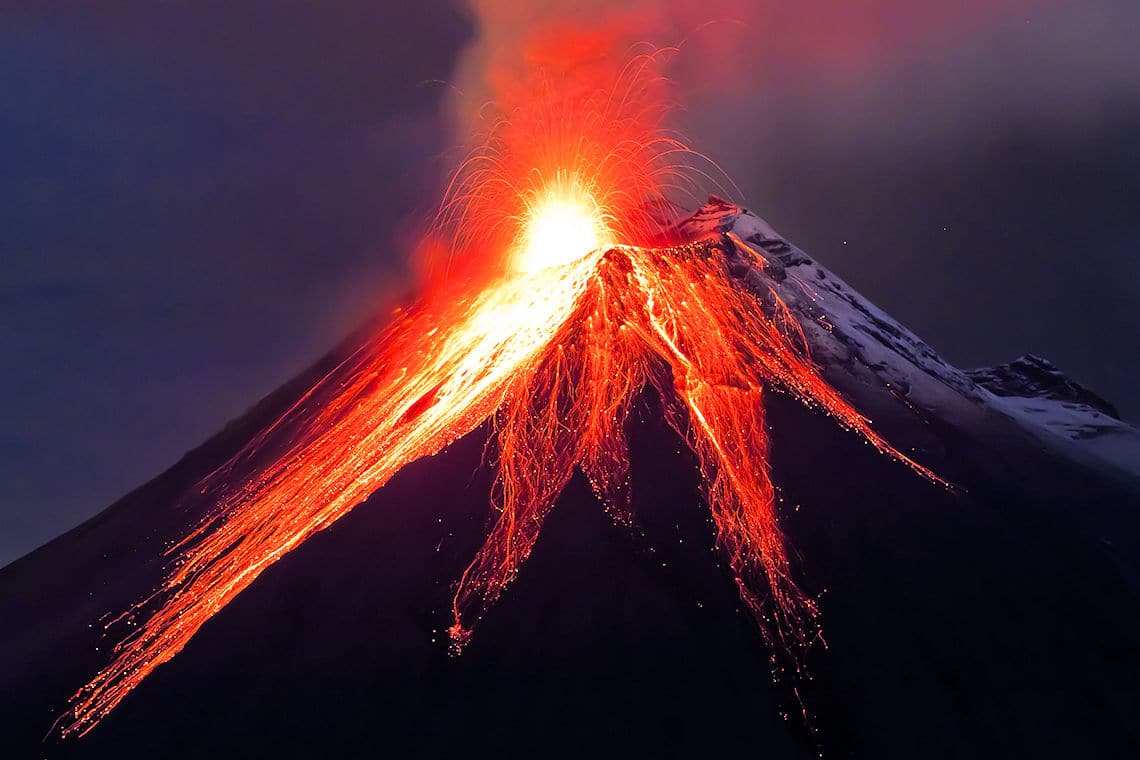1.4K
As the name suggests, the structure of stratovolcanoes consists of different layers. Stratovolcanoes make up only 10 per cent of all volcanoes. These include, for example, Mount Etna and Stromboli in Italy.
Layer volcano structure
A stratovolcano consists of individual layers of lava and so-called loose mass such as ash.
- The alternation of these layered materials is due to eruptions that eject not only lava but also ash.
- Layered volcanoes are recognisable by their very pointed and steep shape, similar to that of a cone. The slopes of such a volcano have a gradient of more than 30 degrees.
This is how the layers are created
The type of magma is responsible for the strata formation.
- The higher the proportion of silica, the more viscous the magma. The temperature of lava also plays a role. At 700 – 900 degrees, for example, it is quite cold. This together makes the magma thick and so viscous flowing lava flows are formed.
- This magma develops by melting the lower part of the Earth’s crust. It contains a lot of gas, but this cannot escape because of the viscosity of the magma.
- The gases build up until the pressure is so high that they escape to the Earth’s surface, alternately carrying lava or ash with them.
- As these alternations of material eject at the surface, the layers of the volcano form.
